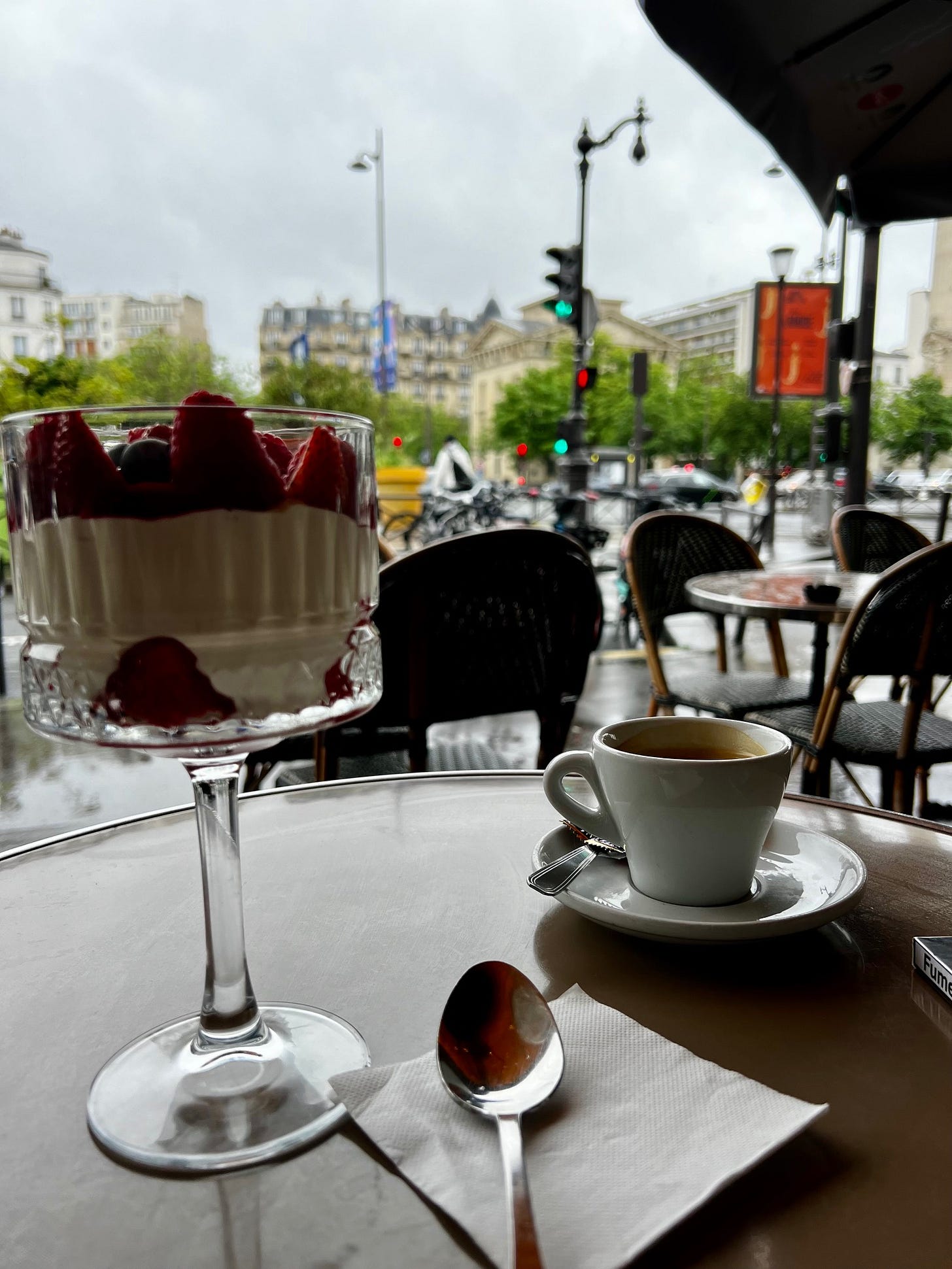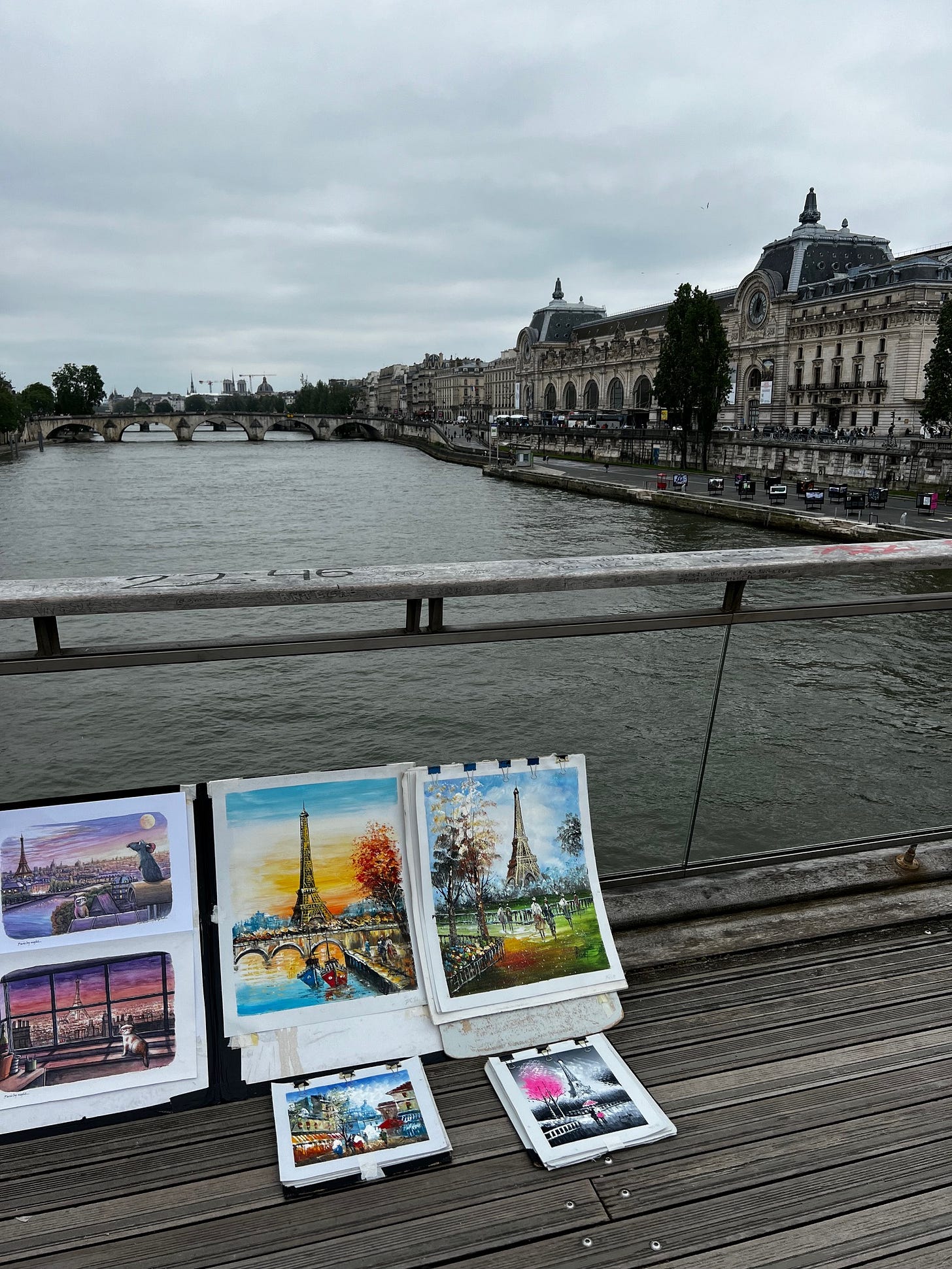Who Gets to Decide What's Real?
From buildings to laws to social rules — you're living in other people's imaginations. But you don't have to stay there.
I was looking at some travel photos from last summer and got caught up thinking about something obvious that isn't really obvious at all. Literally everything I could see was the result of someone else's imagination.
Every building, every car, every lamppost, every sign, every business, every skyscraper. Even the clothes I was wearing. All of it started as a thought in someone's head before it became reality. Someone had to imagine it first, then figure out how to bring it into existence.
It's not just the physical stuff. The way our society is set up? Laws, social order, this whole idea of "professionalism"? That all started with someone's imagination too.
Sometimes people have wonderful imaginations that create beautiful, helpful things we can all enjoy. But some people have terrible imaginations that end up harming others, limiting their space to be authentic, constraining their ability to imagine more for themselves.

How Imagination Works
So what's happening in our brains when we imagine things into existence? There's actually solid science behind this. Researchers found that when we imagine something, our brains create sensory signals strong enough to change how we perceive actual reality. The largest creativity study ever done, involving over 2,400 people across five countries, showed that imagination isn't just daydreaming. It's an active process where different brain networks work together to generate ideas and then evaluate them.
What this means is that this capacity has real biological power. Our brains process imagined experiences remarkably similarly to actual experiences. That's why imagined realities can become so influential. They feel real because, neurologically, they kind of are.
When Bad Imaginations Become Law
When I look at history, I see this pattern over and over. Someone's imagination becomes so powerful it turns into a system that affects millions of people.
Take redlining. In the 1930s, federal officials believed that racially mixed neighborhoods were bad for property values. That belief became official government policy. The Home Owners' Loan Corporation and Federal Housing Administration systematized this vision, creating maps that determined who could get mortgages where.
The effects are still with us. Areas that were redlined decades ago still have worse health outcomes today. That's the power of imagination when it gets institutionalized.
Or consider Jim Crow laws. For over 75 years, white supremacists' imagination of "necessary" racial separation became the law across 17 states, affecting almost every aspect of daily life. Company towns in the early 1900s turned business owners' vision of "efficiency" into a system where corporations owned workers' housing, stores, and even the money they were paid with.
These weren't natural laws or inevitable outcomes. They were people's imaginations made real through institutional power.
Who Gets to Win
Antonio Gramsci, an Italian philosopher, had this concept called "cultural hegemony." Basically, ruling groups don't just control through force. They win by making their worldview seem like common sense. Their imagination becomes so embedded in education, media, and culture that we stop seeing it as someone's particular vision and start seeing it as just "how things are."
This is how certain imaginations become dominant. People with access to institutions, media, and resources get to frame their visions as universal truths rather than particular perspectives. Meanwhile, other imaginations often from marginalized communities get dismissed as unrealistic, dangerous, or simply ignored.
Fighting Back with Creativity
But what gives me hope is this. Throughout history, marginalized communities have used creativity and imagination to resist these dominant systems and create alternatives.
During the Civil Rights Movement, Martin Luther King Jr.'s imagination of people "not judged by the color of their skin but by the content of their character" became organized resistance that transformed law and society. The women's suffrage movement took 72 years to turn the imagination of women voting into the 19th Amendment.
Research shows that engaging in creative activities significantly reduces stress, improves self-esteem, and restores people's sense of agency. When people create, whether it's art, writing, building something, starting a business, they're literally practicing the skill of bringing imagination into reality.1
I've seen this in my own life. Creating my Substack, starting a podcast, drawing, painting. Each time I bring an idea from my head into the world, I'm proving to myself that I don't have to just live in other people's visions. I can create my own—whether that's questioning whose ideas we consume or building new realities entirely.

What This Means for You and Me
The reality is, we do live largely in other people's imaginations. The economic systems that determine what jobs exist and how much they pay. The social rules about what's considered "professional" or "appropriate." The physical spaces we move through every day. The stories we're told about what's possible and what's not.
But recognizing this is the first step toward something powerful. Choosing to create rather than just consume.
Every time you make something, whether it's a meal, a piece of art, a business, a solution to a problem in your community, you're practicing the fundamental human capacity to transform imagination into reality. You're proving that the world doesn't have to stay exactly as others imagined it.
The neuroscience is clear about our brains being wired for this. History is clear about change happening when people organize around new visions. Contemporary research is clear about creativity being both healing and empowering.
So the question becomes this. What are you going to create?
You may be living in someone else's imagination, but you don't have to stay there. ⁂
I came across this insight in The Creative Act: A Way of Being by Rick Rubin while living in Dublin. I took this photo on December 17, 2023, reading in bed. His perspective on creativity as a fundamental human capacity helped shape how I think about imagination and reality. Highly recommend it if you're interested in exploring your own creative process.






